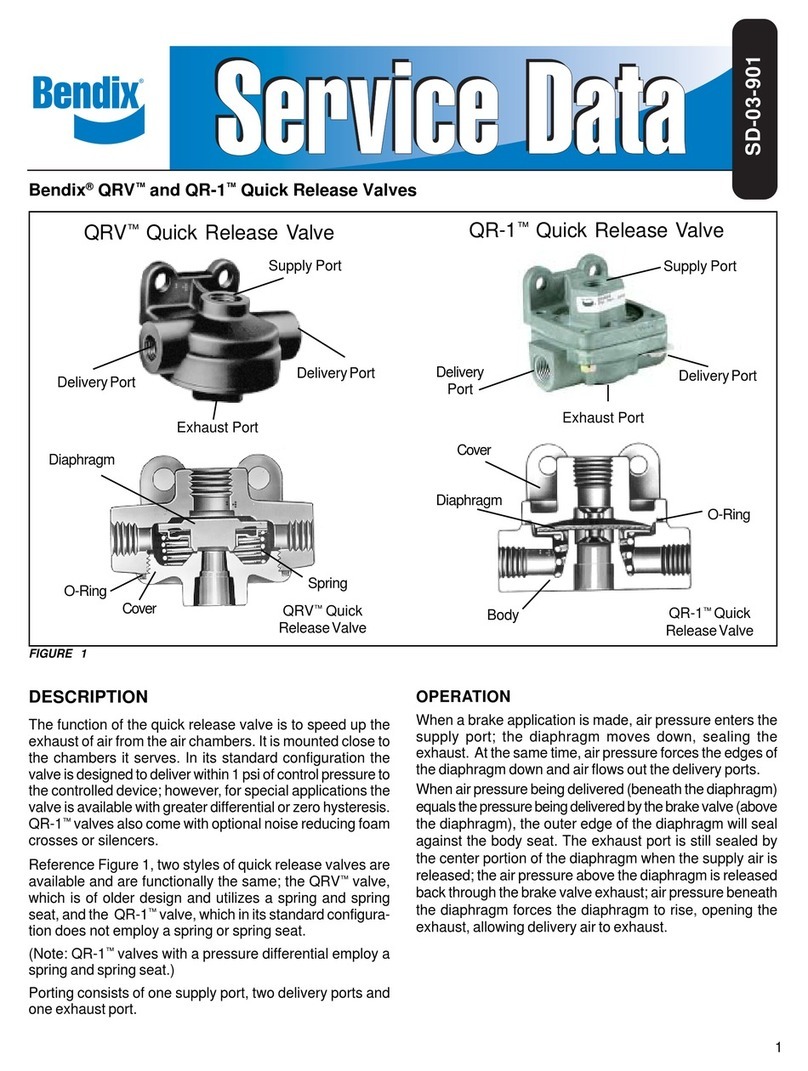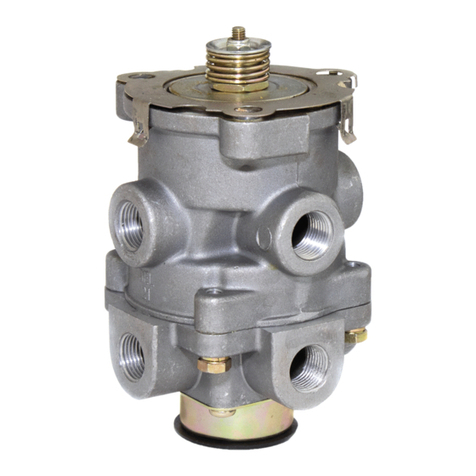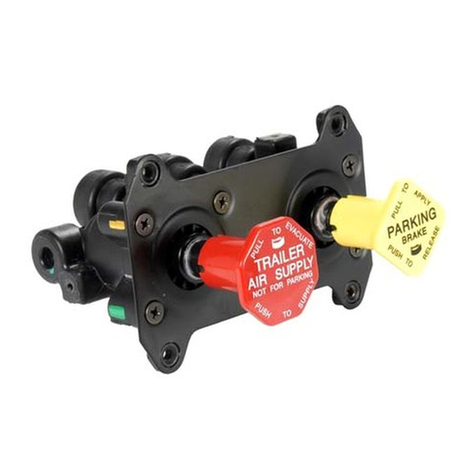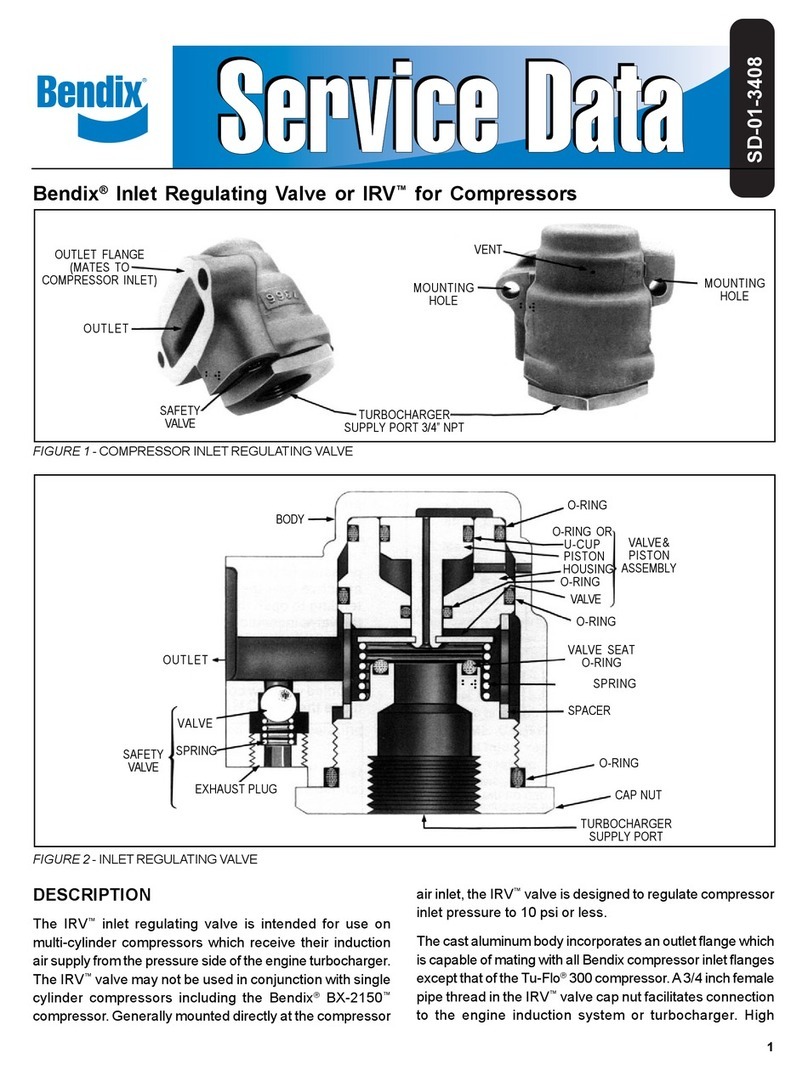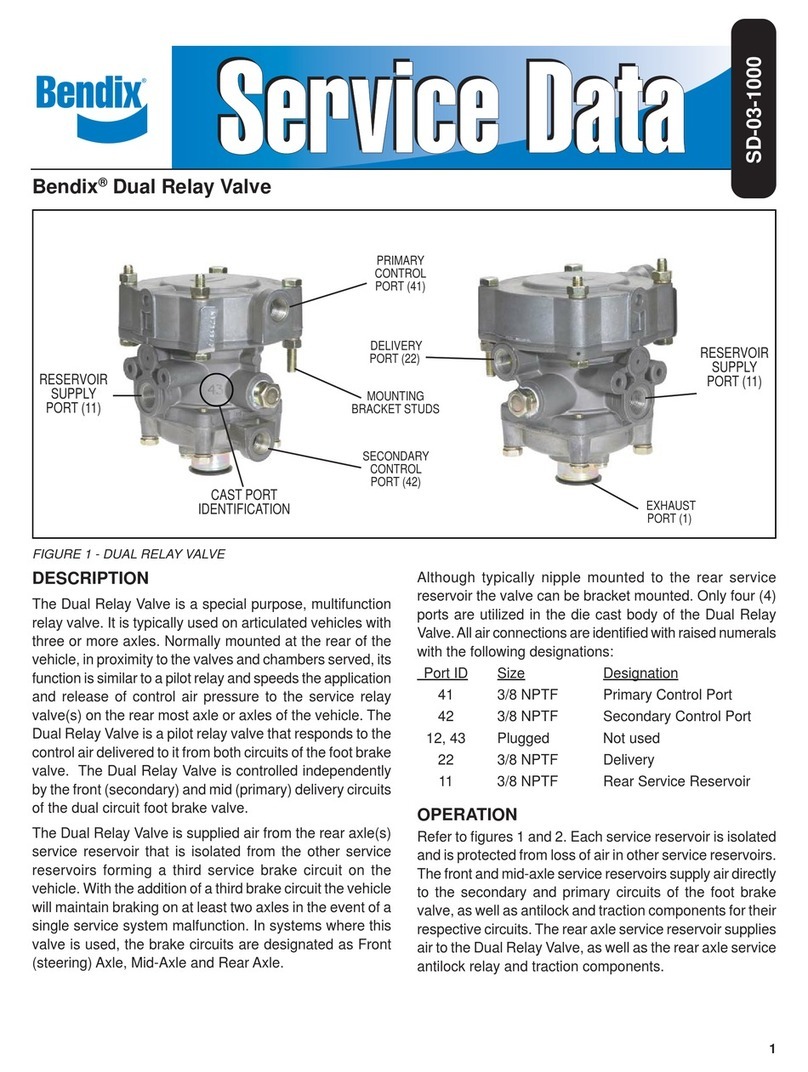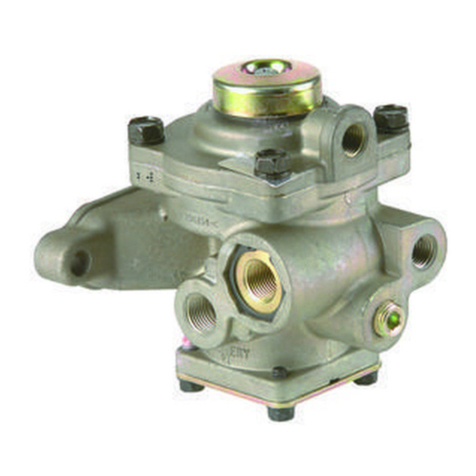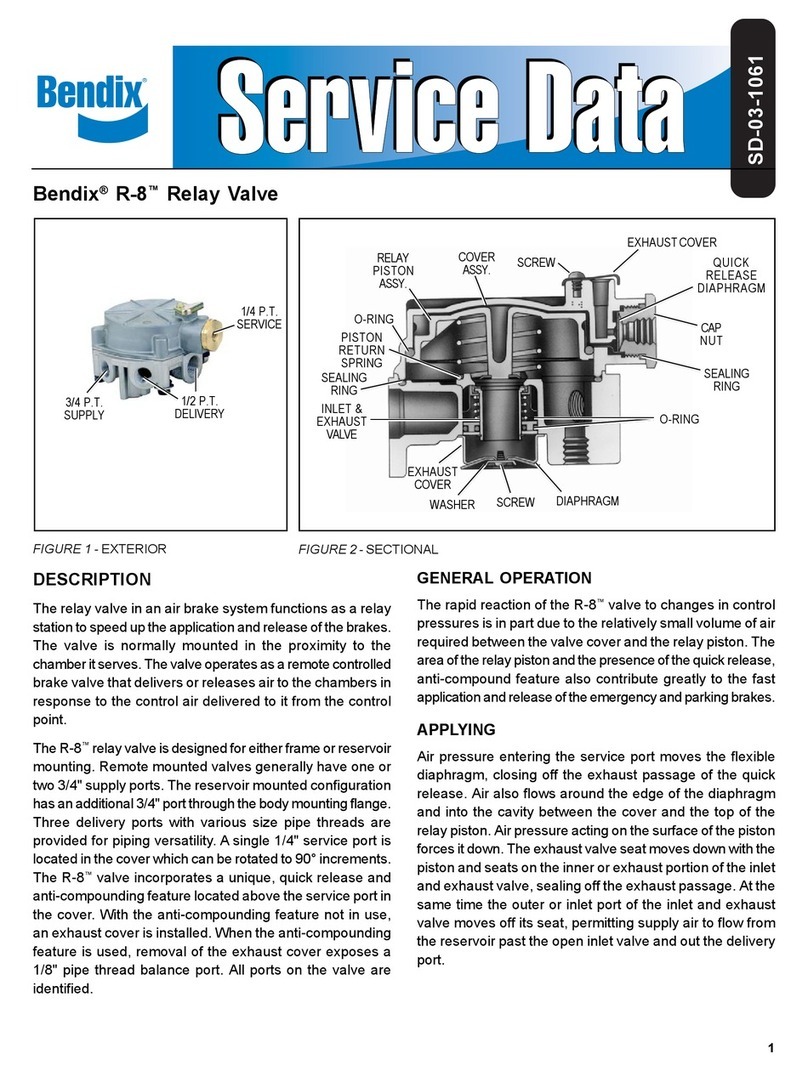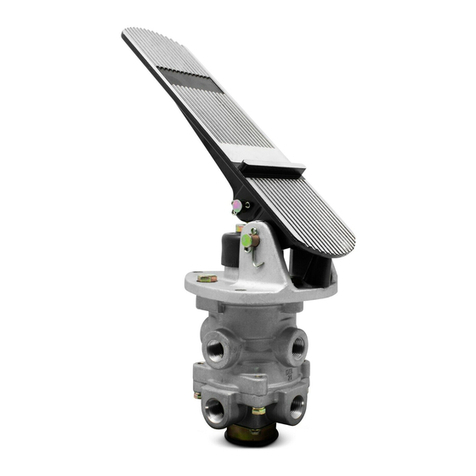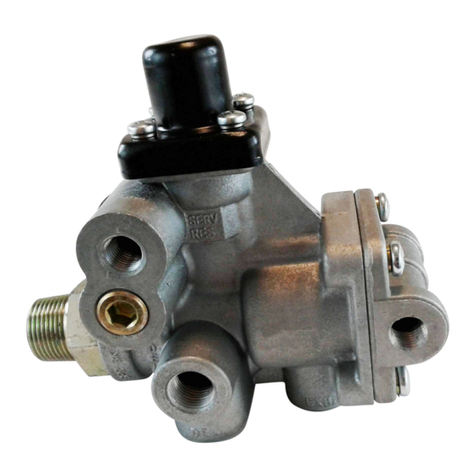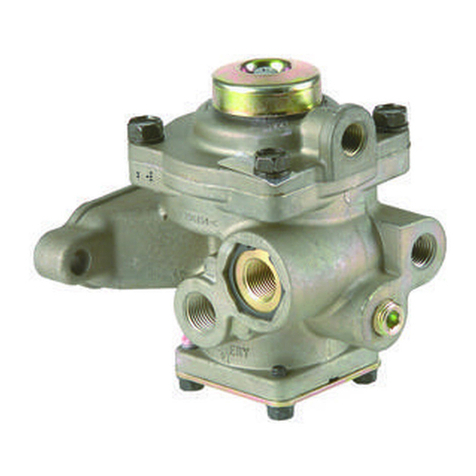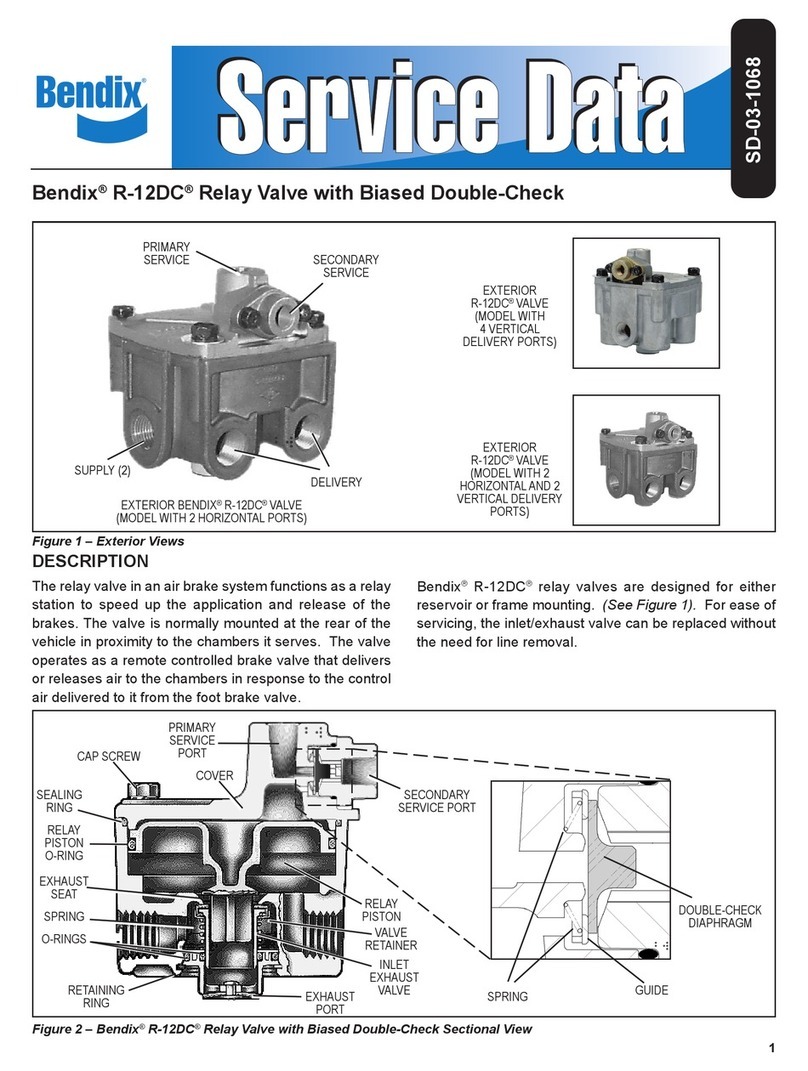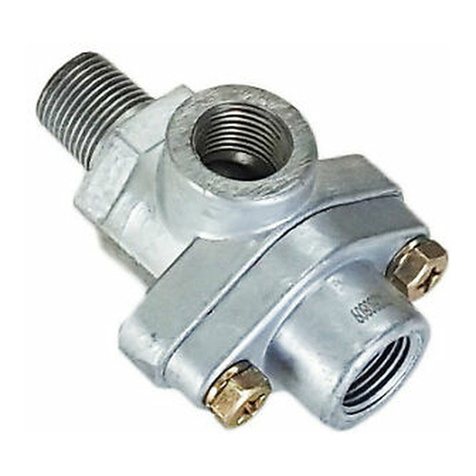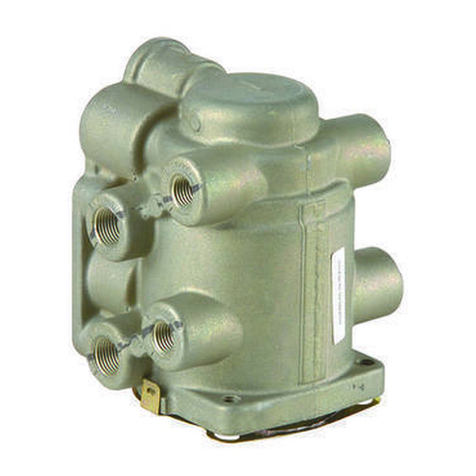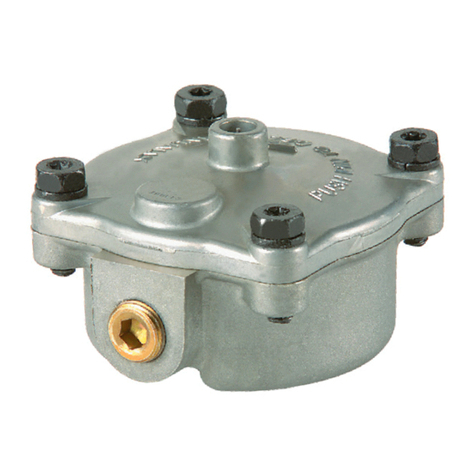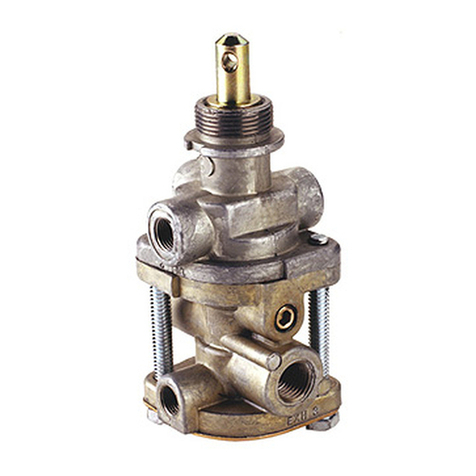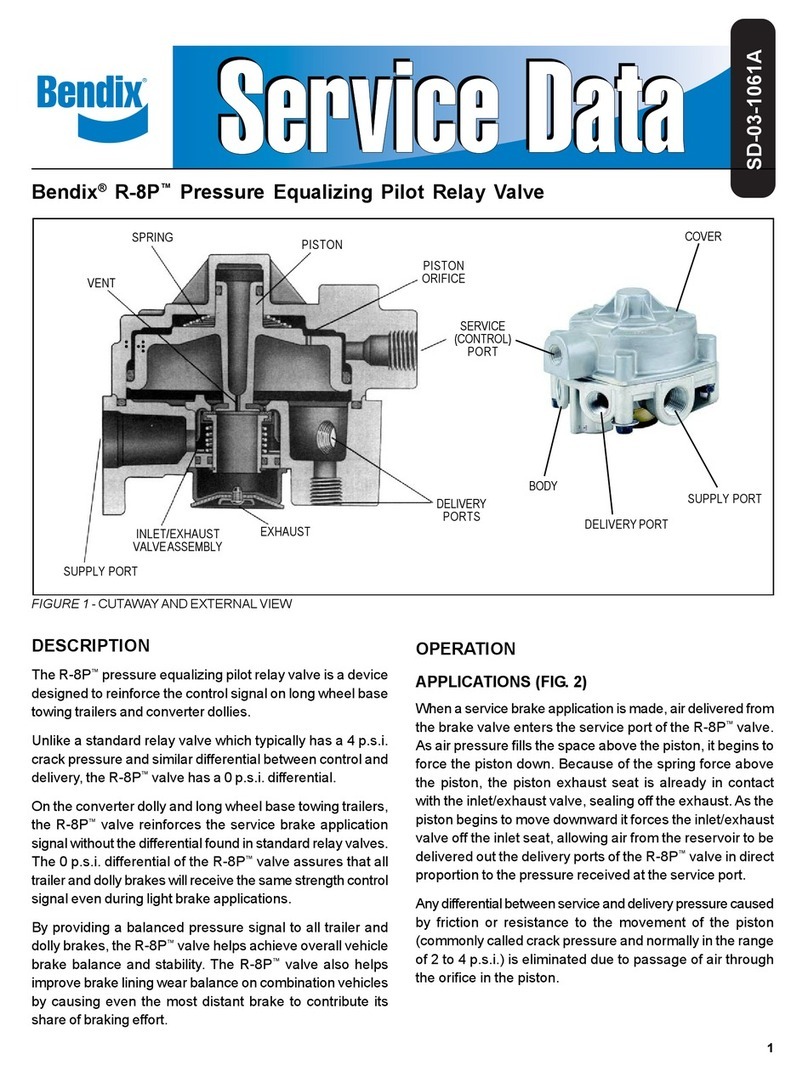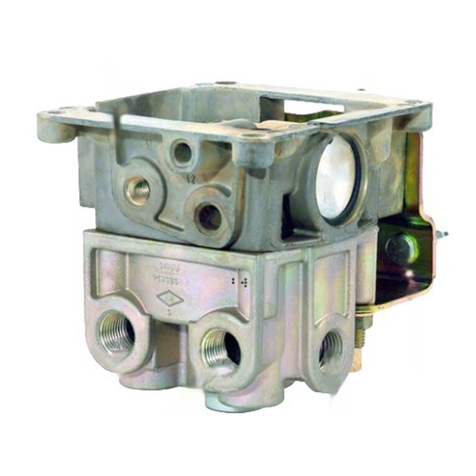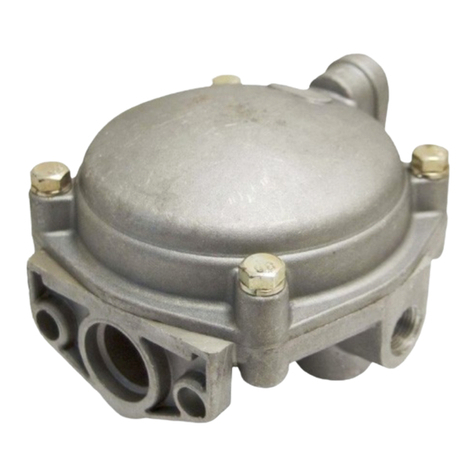
2
S-1130 © 2002 Bendix Commercial Vehicle Systems LLC 2/2002 Printed in U.S.A. All rights reserved.
IMPORTANT! PLEASE READ AND FOLLOW
THESE INSTRUCTIONS TO AVOID
PERSONAL INJURY OR DEATH:
When working on or around a vehicle, the following
general precautions should be observed at all times.
1. Park the vehicle on a level surface, apply the
parking brakes, and always block the wheels.
2. Stop the engine when working around the vehicle.
3. If the vehicle is equipped with air brakes, make
certain to drain the air pressure from all reservoirs
before beginning ANY work on the vehicle.
4. Following the vehicle manufacturer’s recom-
mended procedures, deactivate the electrical
system in manner that removes all electrical
power from the vehicle.
5. When working in the engine compartment the
engine should be shut off. Where circumstances
require that the engine be in operation, EXTREME
CAUTION should be used to prevent personal injury
resulting from contact with moving, rotating, leak-
ing, heated, or electrically charged components.
6. Never connect or disconnect a hose or line con-
taining pressure; it may whip. Never remove a
component or plug unless you are certain all
system pressure has been depleted.
7. Never exceed recommended pressures and
always wear safety glasses.
8. Do not attempt to install, remove, disassemble or
assemble a component until you have read and
thoroughly understand the recommended proce-
dures. Use only the proper tools and observe all
precautions pertaining to use of those tools.
9. Use only genuine Bendix replacement parts,
components, and kits. Replacement hardware,
tubing, hose, fittings, etc. should be of equivalent
size, type, and strength as original equipment and
be designed specifically for such applications and
systems.
10. Components with stripped threads or damaged
parts should be replaced rather than repaired.
Repairs requiring machining or welding should
not be attempted unless specifically approved and
stated by the vehicle or component manufacturer.
11. Prior to returning the vehicle to service, make
certain all components and systems are restored
to their proper operating condition.
VEHICLEPREPARATION &REMOVAL OFTHE TW-12
NOTE: It may not be necessary in some installations to
remove the TW-12 from the vehicle to service with the Cap
Nut Kit.
1. Apply the parking brake. Identify and disconnect the
supply, exhaust anddelivery lines from theTW-12and
plug the ends of each.
2. Disconnectthe transmission lever linkage fromthe
TW-12cam.
3. Removethevalve from the vehiclebyremovingthe
mountingscrews.
DISASSEMBLY
1. Usinga7/8" wrench remove anddiscard theCapNut(3),
O-ring(4),Inlet ValveStop(2), Inlet ValveSpring(5)and
InletValve(1).
ASSEMBLY
1. Priortoassembly lubricate bores,o-ringand threads
withlubricant BW-663-M (Lubriplate 930-2). Usingthekit
contents install the Inlet Valve(1) into the supply port of
thevalvebody.Placethe Inlet Valve Spring(5)over the
InletValve(1).The Inlet ValveStop (2) is then placed over
theInletValve Spring.
2. PlaceO-ring(4) over the CapNut(3)as shown. With a
7/8"wrench secure the CapNut(3) into the body.Torque
to50-150inch pounds.
INSTALLATION
CAUTION:Do notfillreservoirwithengineon.Duetothe
complexity of the hydraulic park system, extensive bleeding
of the system is required.
1. Reinstallthevalveand cover plate to mounting bracket
onthevehicle.
2. Removeplugsfromthe exhaust, delivery and supply
lines and connect each to its corresponding port.
CAUTION: Whenconnecting the supply linesecure the
CapNutwitha7/8"wrench to prevent overtorquing of
Cap Nut when tightening the supply line fitting.
3. Fillthebrakepumpreservoir.
4. With the vehicle wheels blocked, start the engine and
inspectfor leaks. Release theparking brake. Turn the
engineoff and bleed thechambers until they reacha full
application.Replenishthereservoir.DONOTAPPLY
THEPARKING BRAKE.Starttheengine and runfor15
seconds,turn the engine offandbleed the chambers
until they reach a full application. Replenish the
reservoir.
5. Withtheengine on, cyclethevalve every 20seconds for
10minutes. Release the brakes, turn the engine off,
bleedthe chambers, apply theparkingbrake and
replenishreservoirtofullmark.
TEST
Before placing the vehicle in service, check the system for
correctoperation,possibleleakageandproperlyfilled
reservoirs.
